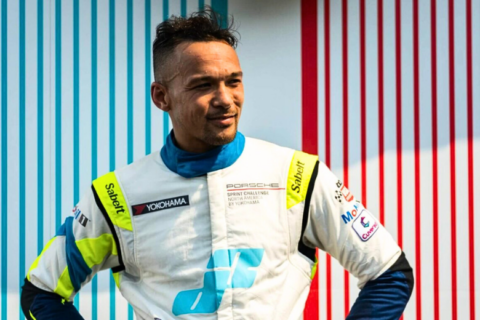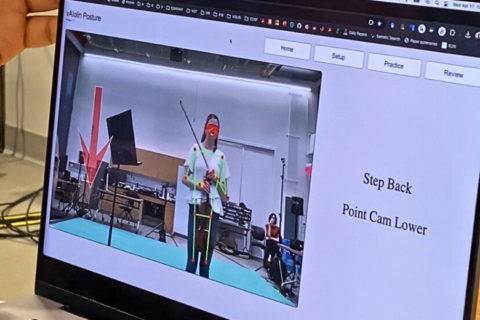This article was republished with permission from WTOP’s news partners at Maryland Matters. Sign up for Maryland Matters’ free email subscription today.

This content was republished with permission from WTOP’s news partners at Maryland Matters. Sign up for Maryland Matters’ free email subscription today.
Gov. Lawrence J. Hogan Jr. (R), wearing his hat as co-chair of the national nonpartisan political organization No Labels, convened a meeting of more than two dozen governors, U.S. senators and House members in Annapolis on Thursday and Friday for a bipartisan conversation about infrastructure.
The two-day meeting came during a week when the Biden administration continues to sell its $2 trillion infrastructure plan, congressional Republicans revealed details of a nascent counter-proposal, and the bipartisan Problem Solvers Caucus in the U.S. House of Representatives released a 20-page document Friday listing points of consensus for improving America’s infrastructure.
For Hogan, who has made preaching bipartisan part of his political brand, it was a highly sought-after tableau of Republicans and Democrats sharing a unified vision of how government ought to work.
Hogan and the political leaders who spoke at an afternoon news conference Friday outside Government House, the governor’s mansion in Annapolis, emphasized that while President Biden continues to develop and promote his infrastructure spending package, the American Jobs Plan, over the next few months, their conversations are just beginning.
“It’s a very unusual thing when you have governors, senators and members of Congress of both parties sitting down together,” Hogan said, telling reporters that the participants “reached agreement on a series of principles that should guide any infrastructure package” that Congress enacts.
Hogan and the other elected officials said any final plan will be pieced together over the next few months and will likely be presented to the Biden administration and congressional leaders.

But what emerged Friday is that the politicians who assembled in Annapolis for the most part are only discussing what Sen. Joe Manchin (D-W.Va.) referred to as “conventional infrastructure” — roads, bridges, broadband and the like — rather than “human infrastructure,” the more complex Biden administration spending proposals to boost wages, create more protections for essential workers, and increase research and development programs.
At the conclusion of the summit Friday, participants said they would encourage officials negotiating the infrastructure and public investment package to be guided by the following principles:
- That it be developed and passed with the support of both Democrats and Republicans.
- That it includes programs to bolster physical and digital infrastructure.
- That includes “investments in existing physical assets that make our communities more livable, and enable us to more safely and efficiently move people, water, energy and goods across America.”
- That it includes investments in “new physical assets, broadband, and energy technologies.
Virginia Gov. Ralph S. Northam (D) said the statement was developed “after candid discussions” and was designed with an eye on the individual needs of state and local governments.
“This is not a cookie cutter situation,” he said. “One size doesn’t fit all. Each state has its own set of priorities.”

Northam said Virginia and Maryland “have already established precedent” to work together on infrastructure on a bipartisan basis, citing funding efforts to bolster the Washington, D.C., area Metro system and plans to rebuild the American Legion Bridge along the Capital Beltway.
The other speakers Friday were symbolically chosen for their bipartisan bona fides. Manchin is part of a group in the Senate informally known as the G-20 — 10 Democrats and 10 Republicans who meet regularly to discuss policy challenges.
“This is what governing is all about — coming together,” Manchin said. “And there’s no greater common cause than infrastructure.”
Also speaking were Reps. Josh Gottheimer (D-N.J.) and Brian Fitzpatrick (R-Pa.), the co-chairs of the Problem Solvers Caucus in the House, which consists of 29 Democrats and 29 Republicans.
“We have to come out with a bipartisan agreement, which means nobody’s going to get everything they want,” Fitzpatrick said. “But if you get close to 80% of what you want, that’s real progress.”
Within the Problem Solvers Caucus, 75% of members have to agree before the caucus can advance a policy recommendation, lawmakers said. And several speakers at Friday’s news conference said centrists can form a very formidable bloc in the closely-divided Senate and House.
“If infrastructure is done the right way, then it’s an investment, it’s not an expense,” Fitzpatrick said.
Several of the speakers said that beyond the policy discussions, there was enormous value and kinship in coming together in a relaxed fashion, learning about the other participants’ political histories, and hashing out common problems — plus eating Maryland crabcakes.
“It is possible to come together,” said Rep. Dean Phillips (D-Minn.). “It is important. It is necessary. And it can’t be legislated.”
The other participants in the two-day confab were:
- Pennsylvania Gov. Tom Wolf (D)
- Louisiana Gov. John Bel Edwards (D)
- Sen. John Cornyn (R-Texas)
- Sen. Susan Collins (R-Maine)
- Sen. Bill Cassidy (R-La.)
- Sen. Todd Young (R-Ind.)
- Sen. Jacky Rosen (D-Nev.)
- Sen. Mitt Romney (R-Utah)
- Rep. Carolyn Bourdeaux (D-Ga.)
- Rep. Jared Golden (D-Maine)
- Rep. Jenniffer González-Colón (R-Puerto Rico)
- Rep. John Katko (R-N.Y.)
- Rep. Conor Lamb (D-Pa.)
- Rep. Susie Lee (D-Nev.)
- Rep. Tom Reed (R-N.Y.)
- Rep. Tom Rice (R-S.C.)
- Rep. Abigail Spanberger (D-Va.)
- Rep. Tom Suozzi (D-N.Y.)
- Rep. Van Taylor (R-Texas)
- Rep. Fred Upton (R-Mich.)
- Rep. David Valadao (R-Calif.)







